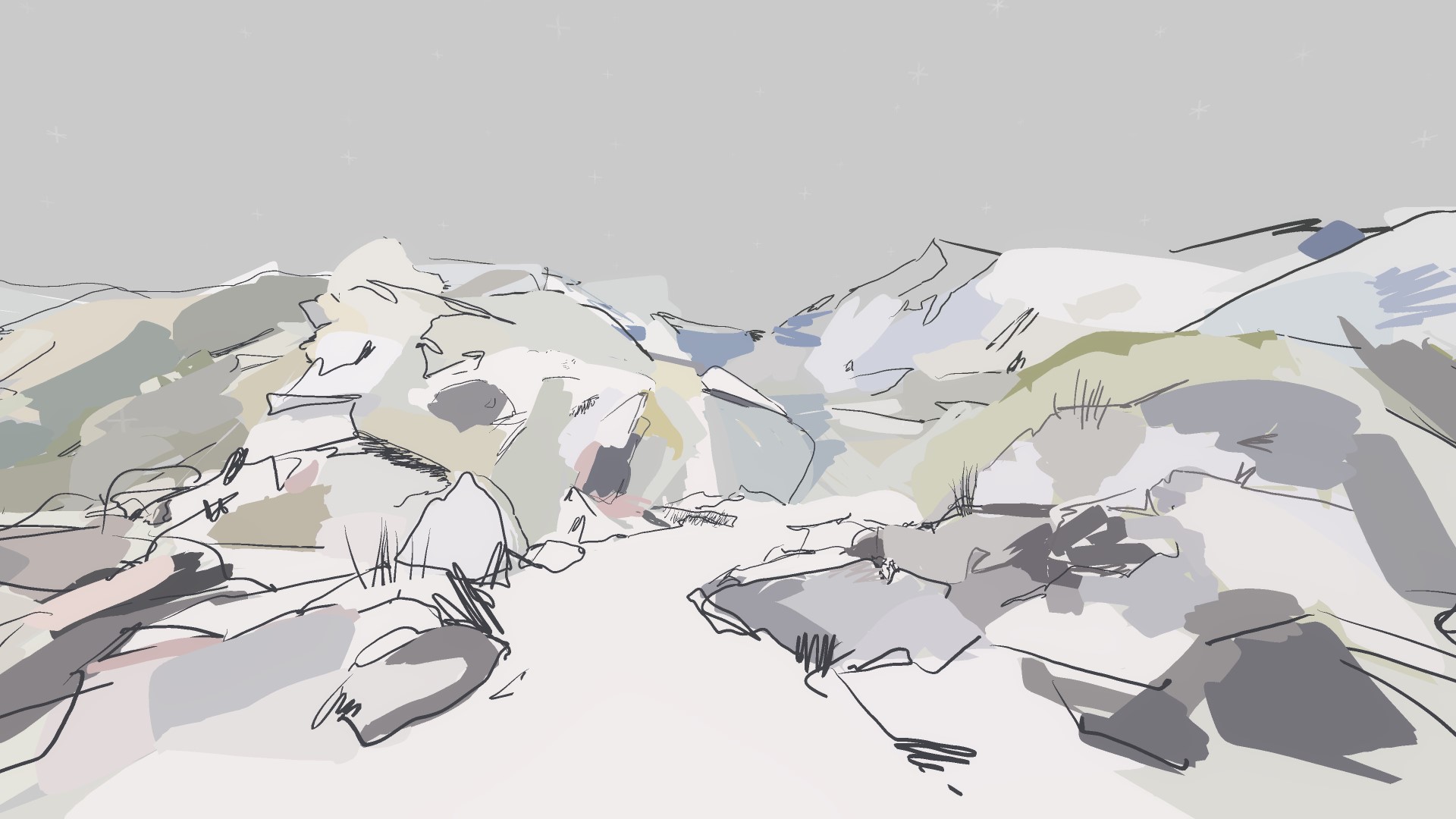VRtist in Residence – Mya Kerner
You may remember Mya’s chiseled mountain landscapes from our third Artisanal Microlobby installation—since then, we have a new installation – Mya herself has been working in our office, but immersed in a world of her own creation. Google’s Tilt Brush program, paired with our VR lab, makes that possible.
A few of us have been lucky enough to enter her virtual landscapes, and found it otherworldly. We were curious about how this has impacted her work, and we thought you might be too. Read below for her impressions:
How did you first learn about the program you’re using?
I know someone who works in the industry and she told me about it at a dinner party. It was after that conversation that I formed the idea to build a landscape with Tilt Brush.
What made you want to try it?
The themes that I explore in my work revolve around our connection/disconnection with the Earth. I have concerns about the future of Virtual Reality (VR) and how it could affect humanity moving forward. However, I felt like if I wanted to make a case for my argument, I had to experience it for myself.
What have you learned from using Tilt Brush?
It is easy to get lost when constructing your own reality!
Do you think this will change anything about the way you paint in 2D?
It already has. To paint in 3d really forced me to consider how each stroke would look from every direction. I’ve worked in the round while making sculpture, and that has always informed my paintings, but there is something different about painting in 3d that makes me consider my 2d marks differently now.
Also, there is one specific painting I had a strange experience with. I had just come back from a 2 hour session in VR and felt an urge to paint. I worked on enlarging a study I had also used as a reference in my VR landscape. The original study was based on a place I had visited in the French Pyrenees last summer, and when I first painted it I had specific memories and feelings and sensations which I associated with the scene. When I worked on the larger painting, these were drowned out by the memory of creating the scene in VR. Because the VR version was more similar visually to how I was representing the memory, I didn’t need the memory itself. Aesthetically, I really love the painting that came out of this. The marks are very satisfying to me, because I know what they look like on the other side. However, the experience which I pulled from was a completely solitary, visual experience, so, it disturbs me somewhat that this painting seems to be devoid of the feeling I usually imbue in my work. I almost completely forgot to hang it in my show because the emotional attachment isn’t there. I think this will only happen if I paint something after depicting it in VR.
Are there aspects of it that are lacking / do you miss aspects of physical painting when you are in VR?
I miss the resistance and constraints of working in reality. There is a continual negotiation when working with tangible materials, meaning the result is a conversation between my self, the natural world, and the material. This doesn’t happen in VR. It feels as if anything is possible, and everything is in my control. Which is awesome, in the true meaning of the word, but also, the result is pretty lonely. This creates the perfect landscape for the viewer to encounter my fears of severing attachments to the tangible world. So, really, it is better for expressing certain themes in my work, but less satisfying to me as a process.
I truly enjoyed the experience and hope to do more with VR in the future.






